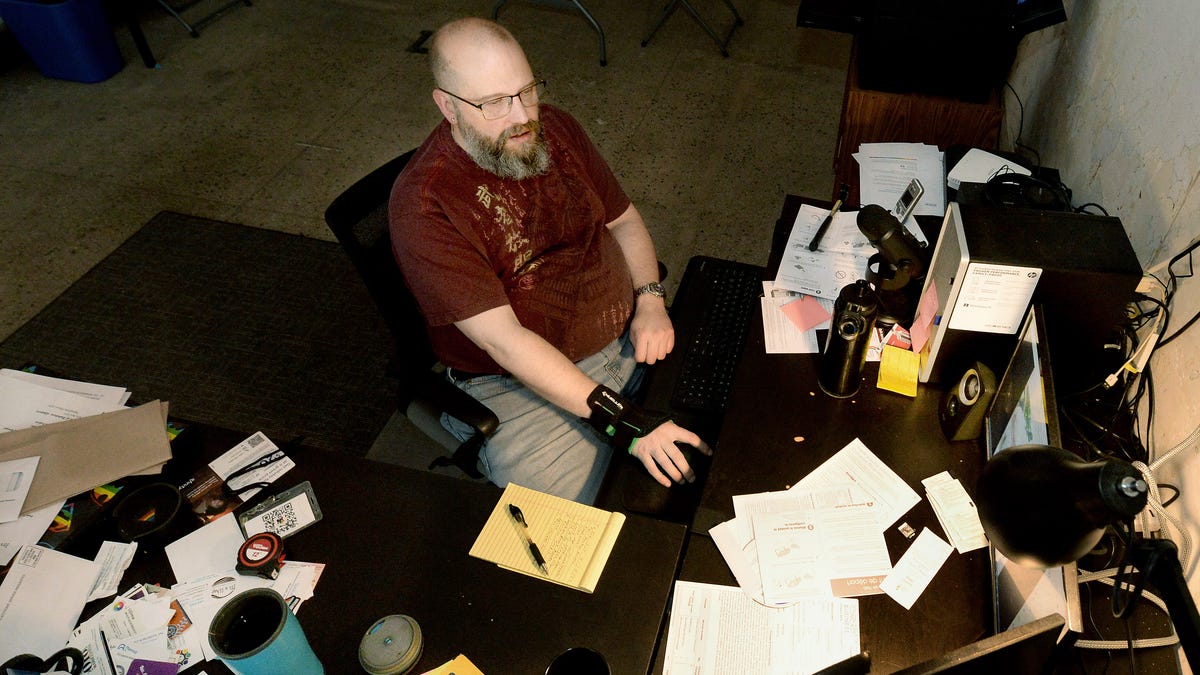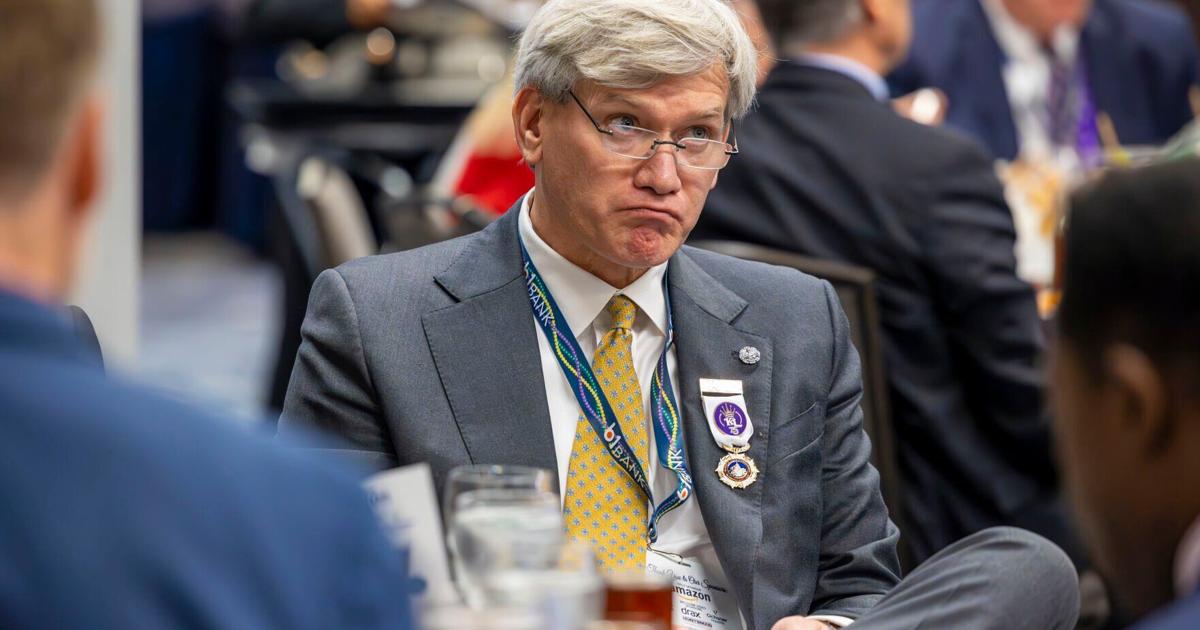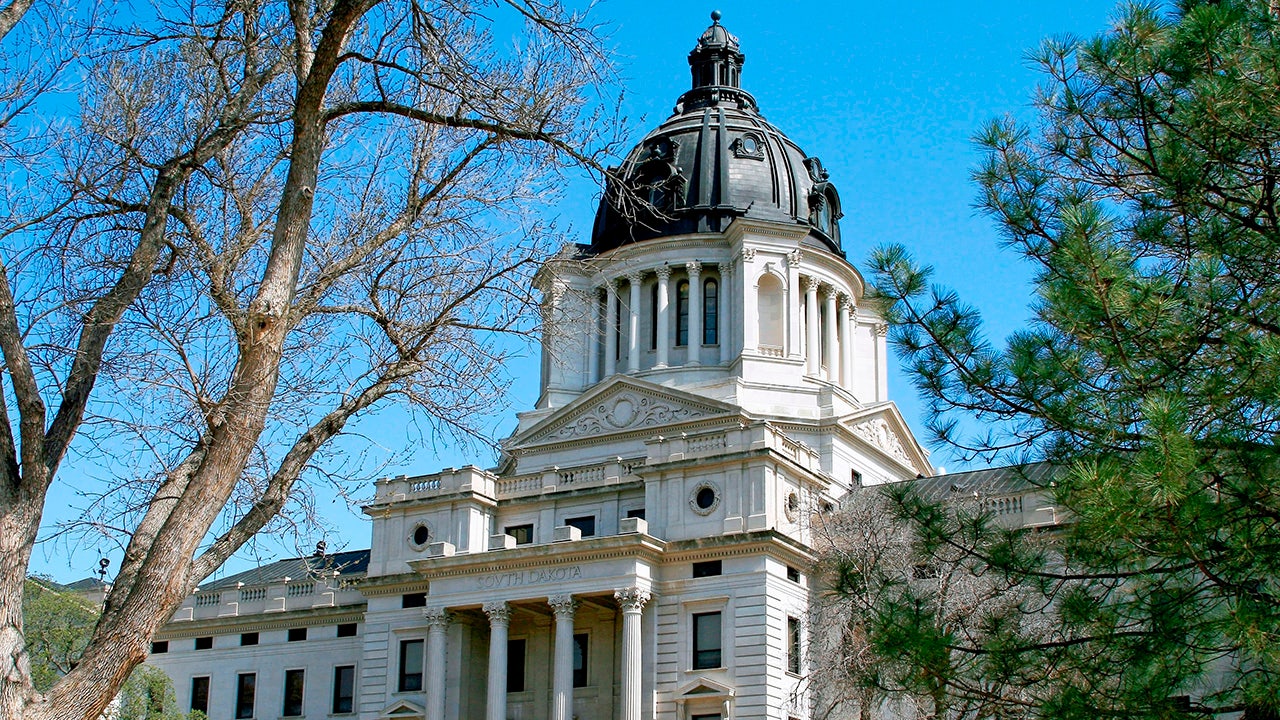Business
Column: After a years-long pause, the FCC resurrects 'network neutrality,' a boon for consumers

In the midst of its battle to extinguish the Mendocino Complex wildfire in 2018, the Santa Clara County Fire Department discovered that its internet connection provider, Verizon, had throttled their data flow virtually down to zero, cutting off communications for firefighters in the field. One firefighter died in the blaze and four were injured.
Verizon refused to restore service until the fire department signed up for a new account that more than doubled its bill.
That episode has long been Exhibit A in favor of restoring the Federal Communications Commission’s authority to regulate broadband internet service, which the FCC abdicated in 2017, during the Trump administration.
This is an industry that requires a lot of scrutiny.
— Craig Aaron, Free Press, on the internet service industry
Now that era is over. On Thursday, the FCC — now operating with a Democratic majority — reclaimed its regulatory oversight of broadband via an order that passed on party lines, 3-2.
The commission’s action could scarcely be more timely.
“Four years ago,” FCC Chair Jessica Rosenworcel observed Thursday as the commission prepared to vote, “the pandemic changed life as we know it. … Much of work, school and healthcare migrated to the internet. … It became clear that no matter who you are or where you live, you need broadband to have a fair shot at digital age success. It went from ‘nice to have’ to ‘need to have.’ ”
Yet the commission in 2017 had thrown away its own ability to supervise this essential service. By categorizing broadband services as “information services,” it relinquished its right to address consumer complaints about crummy service, or even collect data on outages. It couldn’t prevent big internet service providers such as Comcast from favoring their own content or websites over competitors by degrading the rivals’ signals when they reached their subscribers’ homes.
“We fixed that today,” Rosenworcel said.
The issue the FCC addressed Thursday is most often viewed in the context of “network neutrality.” This core principle of the open internet means simply that internet service providers can’t discriminate among content providers trying to reach your home or business online — they can’t block websites or services, or degrade their signal, slow their traffic or, conversely, provide a better traffic lane for some rather than others.
The principle is important because their control of the information highways and byways gives ISPs tremendous power, especially if they control the last mile of access to end users, as do cable operators such as Comcast and telecommunications firms such as Verizon. If they use that power to favor their own content or content providers that pay them for a fast lane, it’s consumers who suffer.
Net neutrality has been a partisan football for more than two decades, or ever since high-speed broadband connections began to supplant dial-up modems.
In legal terms, the battle has been over the classification of broadband under the Communications Act of 1934 — as Title I “information services” or Title II “telecommunications.” The FCC has no jurisdiction over Title I services, but great authority over those classified by Title II as common carriers.
The key inflection point came in 2002, when a GOP-majority FCC under George W. Bush classified cable internet services as Title I. In effect, the commission stripped itself of its authority to regulate the nascent industry. (Then-FCC Chair Michael Powell subsequently became the chief Washington lobbyist for the cable industry, big surprise.)
Not until 2015 was the error rectified, at the urging of President Obama. Broadband was reclassified under Title II; then-FCC Chair Tom Wheeler was explicit about using the restored authority to enforce network neutrality.
But that regulatory regime lasted only until 2017, when a reconstituted FCC, chaired by a former Verizon executive Ajit Pai, reclassified broadband again as Title I in deference to President Trump’s deregulatory campaign. The big ISPs would have geared up to take advantage of the new regime, had not California and other states stepped into the void by enacting their own net neutrality laws.
A federal appeals court upheld California’s law, the most far-reaching of the state statutes, in 2022. And although the FCC’s action could theoretically preempt the state law, “what the FCC is doing is perfectly in line with what California did,” says Craig Aaron, co-CEO of the consumer advocacy organization Free Press.
The key distinction, Aaron told me, is that the FCC’s initiative goes well beyond the issue of net neutrality — it establishes a single federal standard for broadband and reclaims its authority over the technology more generally, in ways that “safeguard national security, advance public safety, protect consumers and facilitate broadband deployment,” in the commission’s own words.
Although Verizon’s actions in the 2018 wildfire case did not violate the net neutrality principle, for instance, the FCC’s restored regulatory authority might have enabled it to set forth rules governing the provision of services when public safety is at stake that might have prevented Verizon from throttling the Santa Clara Fire Department’s connection in the first place.
Until Thursday, the state laws functioned as bulwarks against net neutrality abuses by ISPs. “California helped discourage companies from trying things,” Aaron says. Indeed, provisions of the California law are explicit enough that state regulators haven’t had to bring a single enforcement case. “It’s been mostly prophylactic,” he says — “telling the industry what it can and can’t do. But it’s important to have set down the rules of the road.”
None of this means that the partisan battle over broadband regulation is over. Both Republican FCC commissioners voted against the initiative Thursday. A recrudescence of Trumpism after the November election could bring a deregulation-minded GOP majority back into power at the FCC.
Indeed, in a lengthy dissenting statement, Brendan Carr, one of the commission’s Republican members, repeated all the conventional conservative arguments presented to justify the repeal of network neutrality in 2017. Carr painted the 2015 restoration of net neutrality as a liberal plot — “a matter of civic religion for activists on the left.”
He asserted that the FCC was then goaded into action by President Obama, who was outspoken on the need for reclassification and browbeat Wheeler into going along. Leftists, he said, “demand that the FCC go full-Title II whenever a Democrat is president.”
Carr also depicted network neutrality as a drag on profits and innovation in the broadband sector. “Broadband investment slowed down after the FCC imposed Title II in 2015,” he said, “and it picked up again after we restored Title 1 in 2017.”
Carr chose his time frame very carefully. Examine the longer period in which net neutrality has been debated at the FCC, and one finds that broadband investment crashed after a Republican-led FCC reclassified broadband as an information service in 2002, falling to $57 billion in 2003 from $111.5 billion in 2001.
Investment did decline between 2015, when net neutrality rules were reinstated, and 2017, when they were rescinded — by a minuscule 0.8%. It hasn’t been especially robust since then — as of 2002 it was still running at only about 92% of what it had been two decades earlier.
As the FCC observed in Thursday’s order, “regulation is but one of several factors that drive investment and innovation in the telecommunications and digital media markets.”
The commission cited consumer demand and the arrival of new technologies, among others. Strong, consistent regulation, moreover, opens the path for new competitors with new ideas and innovations — and can bring prices down for users in the process.
The truth is that network neutrality has been heavily favored by the public, in part because examples of ISPs abusing their power were not hard to find. In 2007, Comcast was caught degrading traffic from the file-sharing service BitTorrent, which held contracts to distribute licensed content from Hollywood studios and other sources in direct competition with Comcast’s pay-TV business.
In 2010, Santa Monica-based Tennis Channel complained to the FCC that Comcast kept it isolated on a little-watched sports tier while giving much better placement to the Golf Channel and Versus, two channels that compete with it for advertising, and which Comcast happened to own. The FCC sided with the Tennis Channel but was overruled by federal court.
Even barring a change at the White House, the need for vigilant enforcement will never go away; ISPs will always be looking for business models and manipulative practices that could challenge the FCC’s oversight capabilities, especially as cable and telecommunications companies consolidate into bigger and richer enterprises and combine content providers with their internet delivery services.
“This is an industry,” Aaron says, “that requires a lot of scrutiny.”

Business
Boeing Starliner launch delayed due to possibly faulty rocket valve

The launch of Boeing’s Starliner capsule to the International Space Station was scrubbed Monday evening due to a malfunctioning valve on the Atlas V rocket that would blast it into space. It was not immediately certain when it would be rescheduled.
The rocket is a reliable workhorse and is made by the United Launch Alliance, a joint venture of Boeing and Lockheed Martin. After years of delays in Boeing’s Starliner program, the launch with two astronauts aboard is considered crucial.
NASA said an oxygen relief valve on the rocket’s Centaur second stage was “buzzing,” or rapidly opening and closing, and would be closely examined to determine whether it needed to be replaced because of cycling too many times.
The space agency said the launch could be rescheduled as soon as Tuesday or possibly Friday or Saturday. NASA officials said that the crew was never in danger and that the launch might have proceeded if it were a satellite payload.
The decision to scrub the launch was made by NASA, Boeing and the United Launch Alliance.
Boeing’s new Starliner capsule was scheduled to blast off with a crew last summer, but a problem was discovered with its parachute system and the use of flammable tape in the craft, a mile of which was removed. It had been just the most recent of several delays prior to Monday.
This week’s flight plan called for NASA astronauts Barry Wilmore and Sunita Williams to spend a minimum of eight days testing the docked Starliner before returning to Earth as soon as May 15.
Boeing’s capsule is intended to provide NASA with a second U.S. vehicle to reach the space station — along with SpaceX’s Crew Dragon capsule. A prior unmanned Starliner test flight last year docked with the station, but the first flight in 2019 failed to reach it.
The stakes are high for Boeing, which received a $4.2-billion contract from NASA in 2014 to service the International Space Station, while rival SpaceX of Hawthorne received a smaller $2.6-billion contract to also provide the service — and has already sent eight crews to the station.
Boeing is counting on the Starliner to be a success, given the company’s tarnished reputation after two crashes of its 737 Max 8 jets and a door plug that blew out of a 737 Max 9 flight this year on its way to Ontario International Airport in San Bernardino County. The company also had to absorb a reported $1.5 billion in Starliner cost overruns.
NASA selected the companies to provide it with American launch services after having to rely on the Russian program since the space shuttle program ended in 2011.
Business
IMF chief Kristalina Georgieva calls U.S. debt load 'mind boggling'
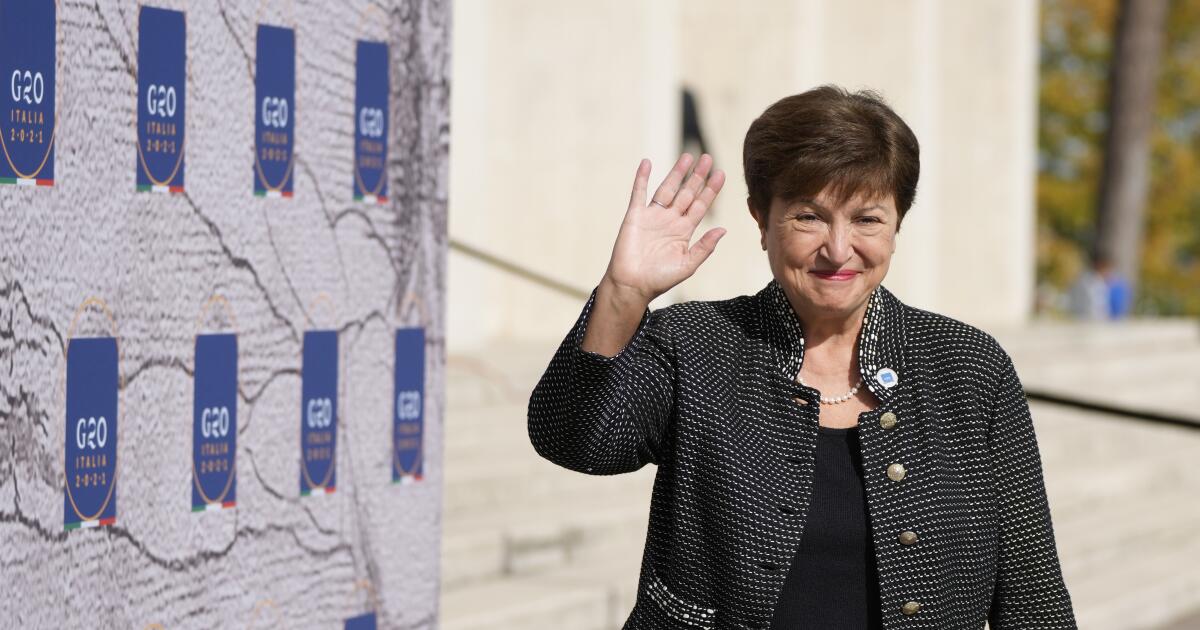
International Monetary Fund Managing Director Kristalina Georgieva praised the strength of the U.S. economy but warned its current level of deficit spending was not sustainable and could crimp U.S. and global growth if it’s not brought under control, in remarks Monday at the Milken Institute Global Conference.
Servicing the U.S debt — now roughly $34 trillion — consumes more than 17% of federal revenue, compared to under 7% in 2015, Georgieva said in an interview that kicked off the annual conference at the Beverly Hilton, which draws thousands of businesspeople, investors and professionals from around the world.
“It cannot go like this forever, because the … burden on the U.S. is going to cripple spending that is necessary to make for servicing the debt. To pay 17-plus percent in debt service is just mind-boggling,” Georgieva said. “There is opportunity cost to this money … it doesn’t go to emerging markets where it can finance jobs and business opportunities for American companies.”
The IMF is composed of 190 member nations and is one of the leading global economic institutions, providing lending to economies in distress.
Georgieva said the U.S. needs to address its entitlement spending but said its economy is strong and remains a pillar of the world economy given its innovation, strong labor market and position as an energy exporter.
She also said she did not believe that the trend toward deglobalization was leading to the disintegration of the global economy, but warned that trade sanctions and industrial policies taken by many nations will only lead to lower growth rates — with the primary question being how much.
“We are measuring that just trade restrictions can cause the world economy to lose between 0.2% and 7% of GDP,” she said, comparing the high-end figure to removing Japan and Germany from the world economy. “So it is really costly.”
However, calling herself an “eternal optimist,” Georgieva said she expected “policymakers to take a course correction when they see that where they are headed is, you know, falling off a cliff.”
She envisioned that this decade will see advanced economies like the U.S. do well, while others will stagnate and lower-income countries continue to fall behind.
“So very likely we will have a world in which some economies transform, some economies stagnate and some parts of the world are in perpetual turbulence,” she said.
Milken Institute President Richard Ditizio introduced the IMF managing director, telling the audience that this year’s 27th annual conference, which ends Wednesday, will feature more than 200 sessions and more than 1,000 speakers.
The theme of this year’s conference is “Shaping a Shared Future,” a reference to finding common ground amid the complex issues that have arisen in the post-pandemic world, including war, the emergence of artificial intelligence and the need to create a sustainable economy amid climate change.
After the IMF managing director’s remarks, Brad Lightcap, chief operating officer of OpenAI, spoke about the San Francisco company’s artificial intelligence products — a technology that Georgieva said the world will need to rely on for growth and productivity gains.
Lightcap said that 92% of Fortune 500 companies are using the company’s ChatGPT enterprise product. He cited Moderna as an example of a business use: the Cambridge, Mass.-based maker of one of the leading COVID-19 vaccines is using the company’s AI for drug development. And the OpenAI chatbot of Swedish mobile-payments company Klarna is replacing the work of 700 customer support agents, he said.
However, Lightcap maintained that artificial intelligence will create job demand in areas that can’t be predicted, and that advancement of the technology is so rapid that in the next 12 months “the systems we use today will be like laughably bad.” He envisioned a not-distant future where “it’ll be foreign to anyone born today that you can’t talk to a computer the way you talk to a friend.”
All public panels are being livestreamed on the institute’s website. Argentina President Javier Milei and Elon Musk are scheduled to speak later in the day.
Business
Jeannie Epper, trailblazing Hollywood stuntwoman, dies at 83
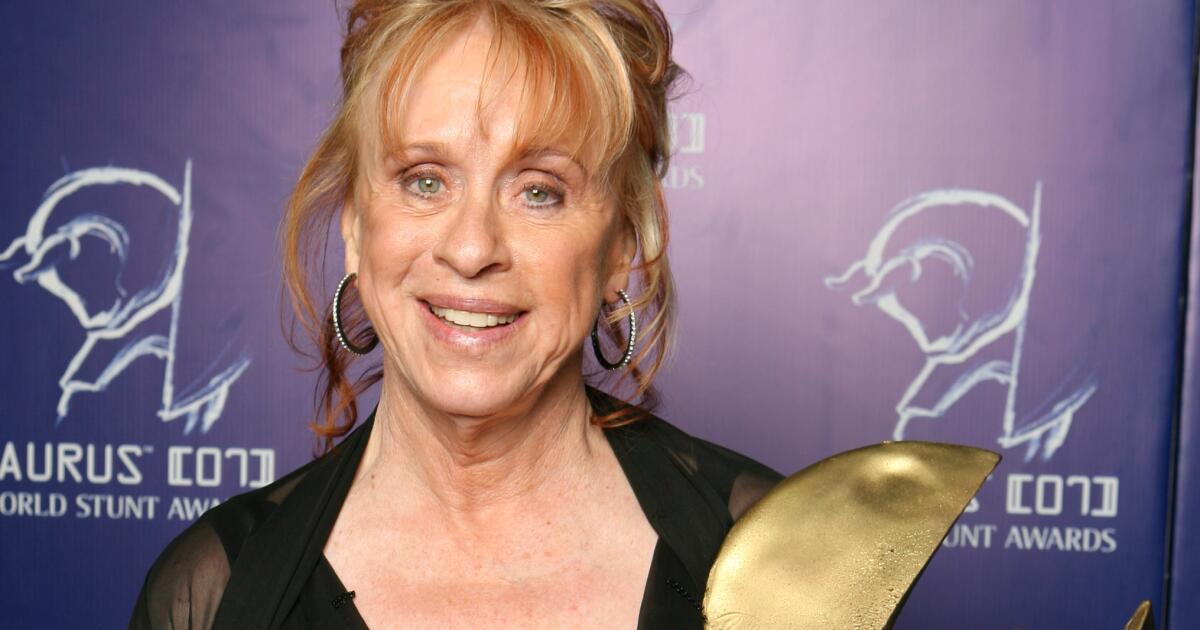
Jeannie Epper, a pioneering stuntwoman who performed in more than 100 films and television series, has died. She was 83.
Epper died Sunday night of natural causes surrounded by family at her home in Simi Valley, a spokesperson confirmed Monday.
In a long career spent bursting through doors, kicking down walls and falling off roofs, Epper changed the course for women in the industry when she became Lynda Carter’s stunt double on the 1970s TV series “Wonder Woman.” It was Epper, standing in for Kathleen Turner, who was swept down a mudslide in “Romancing the Stone” — for which she received a 1985 Stuntman Award for most spectacular stunt in a feature film.
In a blond wig, Epper took the blows for Linda Evans in those iconic catfights with Joan Collins on the nighttime soap “Dynasty.” It’s Epper’s stunt-driving that audiences see when Shirley MacLaine throws Jack Nicholson from her Corvette in the movie “Terms of Endearment.”
Epper’s prolific credits include stunt work in “The Bionic Woman,” “Charlie’s Angels,” “Robocop,” “The Italian Job” and “Kill Bill: Vol. 2.” Epper was profiled alongside fellow stuntwoman Zöe Bell in the 2004 documentary “Double Dare.”
She has been called the “godmother of stuntwomen” and “the grand matron of Hollywood stuntwomen,” working well past retirement age. At age 74, she performed stunts in the 2015 comedy “Hot Pursuit,” starring Sofia Vergara and Reese Witherspoon.
“She certainly qualifies to be one of the greatest stunt coordinators,” said director Steven Spielberg, who worked with Epper on “Catch Me if You Can” and “Minority Report.”
She was born Jean Luann Epper in 1941 to John and Frances Epper, both professional stunt performers. In the 1920s, Epper’s father immigrated to the United States from Switzerland and established a riding academy in Los Angeles where he later became a stuntman for movies, specializing in horseback stunts and doubling for actors including Ronald Reagan and Gary Cooper.
Jeannie Epper grew up in North Hollywood with five brothers and sisters — all of whom worked as stunt people. Her three children and grandchildren also went into the family business.
Epper was a skilled rider, and at age 9, she broke into stunt work, riding a horse bareback down a mountain for a 1950s TV show, becoming one of the first professional child stunt doubles.
“My father said it could be dangerous, but he knew I was an excellent rider,” she told The Times in 1999. “He kept telling me to keep my head up, but that’s about all. I think he didn’t want to over-concern me. There’s a fine line between being concerned and destroying someone’s confidence.”
The series marked the start of Epper’s game-changing career in the male-dominated industry.
Although Epper came from a family of stunt people, it was typical when she began working for men to wear wigs while doing stunts for female actors. But thanks to persistence and shifts in attitudes and fashion, Epper changed the business.
“Actresses began saying, ‘I don’t want a hairy-legged guy doing this for me,’” she told The Times in 1999. “And women were wearing less and less clothes in front of the camera, and it was so obvious it was a man.”
Later, as a stunt coordinator, Epper recalled dealing with men who resented taking orders from a woman.
While working on the 1980s police series “Cagney & Lacey,” she described a guest actor who not only couldn’t throw a convincing punch but also refused to be instructed by a woman, allowing only other stuntmen on set to show him what to do.
“He threw the punch well enough to shoot the scene,” she said. “But he still couldn’t throw it like a man.”
In 2019, on the occasion of being honored at the Artemis Women in Action Film Festival, Melanie Wise — a producer, actor, stuntwoman and founder of the organization — said of Epper, “Jeannie inspired a wave of women to get into stunts. They are in awe of her.”
Epper was a founding member of the Stuntwomen’s Assn. of Motion Pictures and an honorary member of the Stuntmen’s Assn. of Motion Pictures.
She is survived by husband Tim Kimack, daughter Eurlyne Epper, son Richard Epper, five grandchildren and seven great-grandchildren. She was preceded in death by son Kurtis Epper, who was also a stunt performer.
Times staff writer Nardine Saad contributed to this report.
-

 News1 week ago
News1 week agoBoth sides prepare as Florida's six-week abortion ban is set to take effect Wednesday
-

 Politics1 week ago
Politics1 week agoGOP Rep. Bill Posey won't seek re-election, endorses former Florida Senate President as replacement
-

 World1 week ago
World1 week agoRussian forces gained partial control of Donetsk's Ocheretyne town
-

 Politics1 week ago
Politics1 week agoHouse Republicans brace for spring legislative sprint with one less GOP vote
-

 World1 week ago
World1 week agoZelenskyy warns of Russian nuclear risks on Chernobyl anniversary
-

 World1 week ago
World1 week agoAt least four dead in US after dozens of tornadoes rip through Oklahoma
-
Movie Reviews1 week ago
Challengers Movie Review
-

 Politics1 week ago
Politics1 week agoAnti-Trump DA's no-show at debate leaves challenger facing off against empty podium
